I was super excited when I purchased my first Intex Easy Set Deluxe Pool and remember spending every single minute of my free time swimming or just floating in my beloved pool.
Although I did my pre-purchase homework and bought all the right accessories for my pool, I lagged behind on the pool chemistry — the most important part of pool care.
As a novice pool owner, I had no idea how important it is to use the proper chemicals to maintain a clean and clear pool. Within a few days, my sparkling clean pool started to lose its beauty and the water started turning cloudy.
That was when one of my dear friends came to the rescue and guided me through the pool maintenance routine. “Your pool needs cleaning, toning, moisturizing — just like your face.” Those were her exact words to me, which I have never forgotten.
I know that there are a lot of excited new pool owners out there who, like me, may be overwhelmed by their new purchase and may need some coaching on basic Pool Chemicals. Then you can enjoy spending more time in your pool and less time wondering which chemicals to use and when.
Pool Shocks
Pool Shock and Super Chlorinating Chemicals are some of the most important pool chemicals and are the base of your pool maintenance routine. When added to water, these sanitizing chemicals oxidize organic contaminants such as bacteria, deactivating and destroying them.
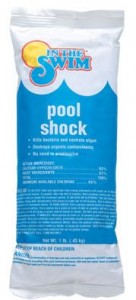
Shock chemicals are extremely powerful oxidizers that are used when extra contaminant-killing power is required, such as at the beginning of the season and after heavy pool usage. Shock chemicals come in different varieties, like Chlorine Pool Shock and Chlorine-Free Pool Shock.
For detailed information on pool shocks, see Lauren’s post: “The Many Types of Pool Shock.“
Pool Sanitizers
There are multiple types and brands of pool sanitizers available on the market, but Chlorine Tablets are the most commonly used sanitizing chemical. Chlorine comes in liquid, granular, tablet and stick form, and it is an inexpensive and effective way to sanitize your pool.
Some folks find chlorine to be too harsh and don’t like chlorine’s strong smell, so for bathers like these, there are several alternatives used to sanitize your pool water and keep it contaminant free.

Bromine is another sanitizing chemical that can be used to keep water sparkling clean without any harsh odors and side effects like red eyes and skin irritation. Bromine is sold in 1-inch tabs and has many advantages over chlorine, but you’ll also pay about twice as much as for chlorine tabs.
Along with the traditional pool sanitizers like chlorine and bromine, there are several options available for green or alternative purification; these options include natural and enzyme-based chemicals.
In The Swim offers a broad range of Chlorine-Free and Alternative Pool Chemicals, including Aqua Silk Chlorine-Free Pool Chemical System and the Natural Chemistry Water Treatment System.
Stabilizers and Balancing Chemicals
Other important swimming pool chemicals include Water Balancing Pool Chemicals. Chemical levels in your pool water are affected by many factors, including sunlight, rain, evaporation and the presence of oils. This means that the water’s chemical levels are always changing, which affects the water’s pH levels and total alkalinity.
Balancing chemicals such as pH Increaser and pH Reducer allow you to keep pH and alkalinity levels in the right range and help maintain healthy and clean water. Water balancing pool chemicals also help enhance the performance of your sanitizer, reducing maintenance time and chemical use.
While bromine cannot be stabilized, or protected from the sun, chlorine’s life can be extended by using stabilizer, aka conditioner. Stabilizing pool chemicals provide protection for chlorine molecules, preventing them from becoming quickly destroyed by UV radiation from the sun. This allows your chlorine-based chemicals to last longer, which saves money and prevents rapid depletion on warm summer days.
Pool Algaecides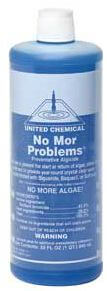
Pool algaecides are also a great help when it comes to keeping your pool free from the ugly and annoying algae attacks. Algae is a form of plant life that grows in water and can cause many problems in swimming pools; making the water cloudy and clogging up filtration systems.
Algaecides are special chemicals that kill algae and prevent its future growth. In The Swim Algaecide and No Mor Problems Algaecide are not only great at eliminating and preventing algae, they are also very affordable and easy to use.
Stain Removal and Prevention
Stains and ugly water lines are another issue that most pool owners have to deal with. Pool Stain Removal & Stain Prevention Chemicals effectively remove and prevent stains that can be caused by metals such as copper, iron, lead, silver, nickel, manganese, and cobalt. These metals are a major cause for discoloration and scaling in your pool water; pool stain removers disperse these metals from your water, leaving it clear and clean. By using stain prevention chemicals on regular basis, the need for backbreaking scrubbing and cleaning will be greatly reduced and it will be far easier to maintain a beautifully clean pool environment.
Chemical Kits
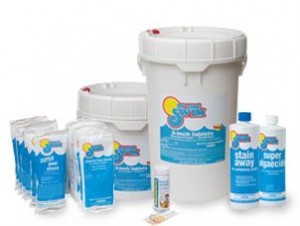
Along with using the above-mentioned chemicals on weekly basis, you can use Pool Chemical Value Packs. These chemical kits are especially for pool openings and closings, and contain everything you will need for a successful winterizing or an easy breezy pool opening.
Pool chemical kits take the guess work out of preparing your pool for closing or opening and contain pre-measured chemicals based on your pool size. Just follow the directions and with one convenient package, you have all you need to close or start up your pool.
Swimming pool chemicals play an important role in maintaining clean, clear water. By killing contaminants, maintaining water’s chemical balance, and preventing stains, these chemicals are absolutely vital to creating a safe and sanitary environment where you can hang out with family and friends, or simply enjoy some special relaxing time.

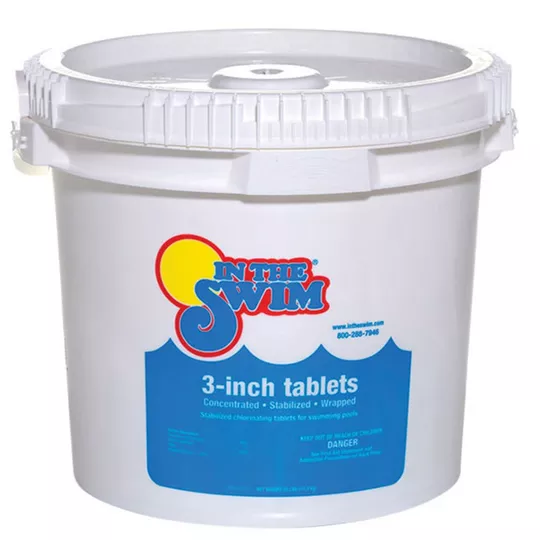
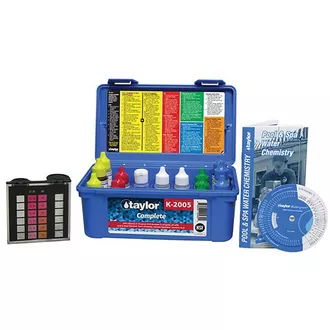
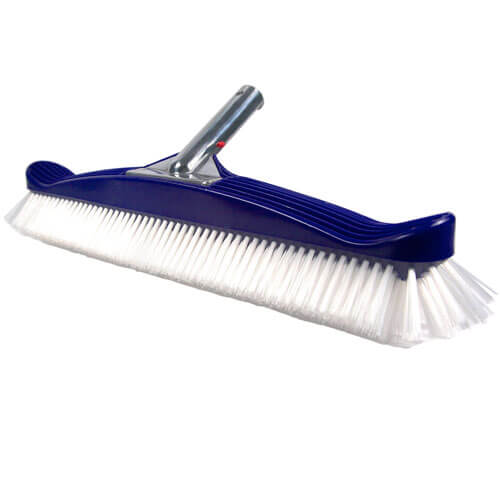

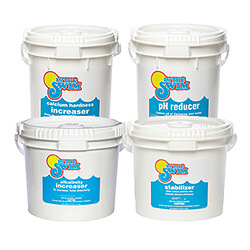

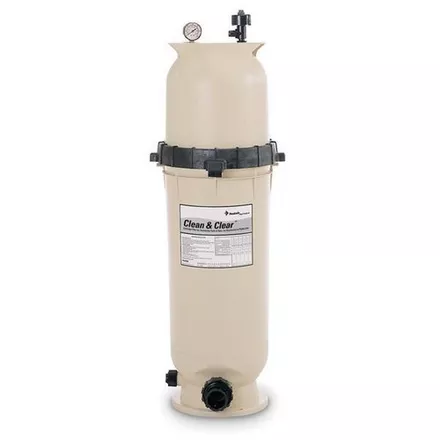
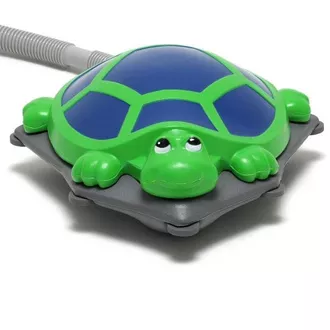
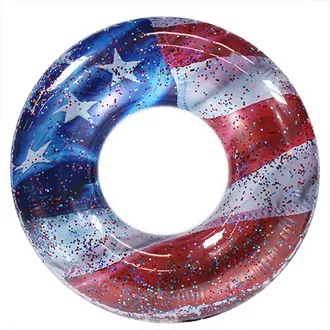

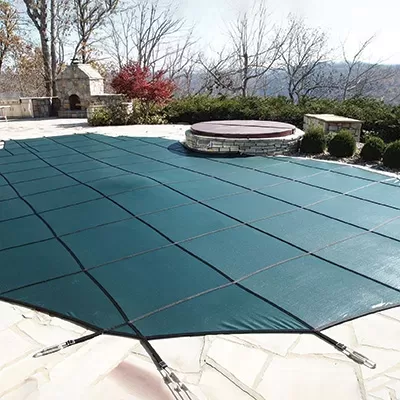
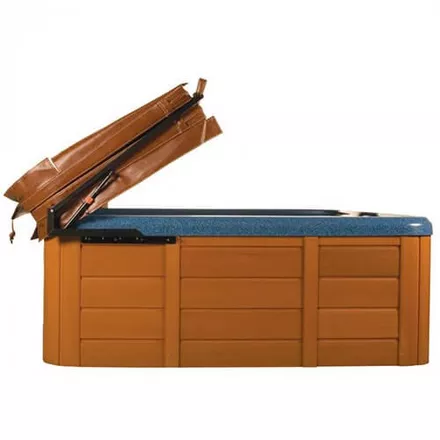
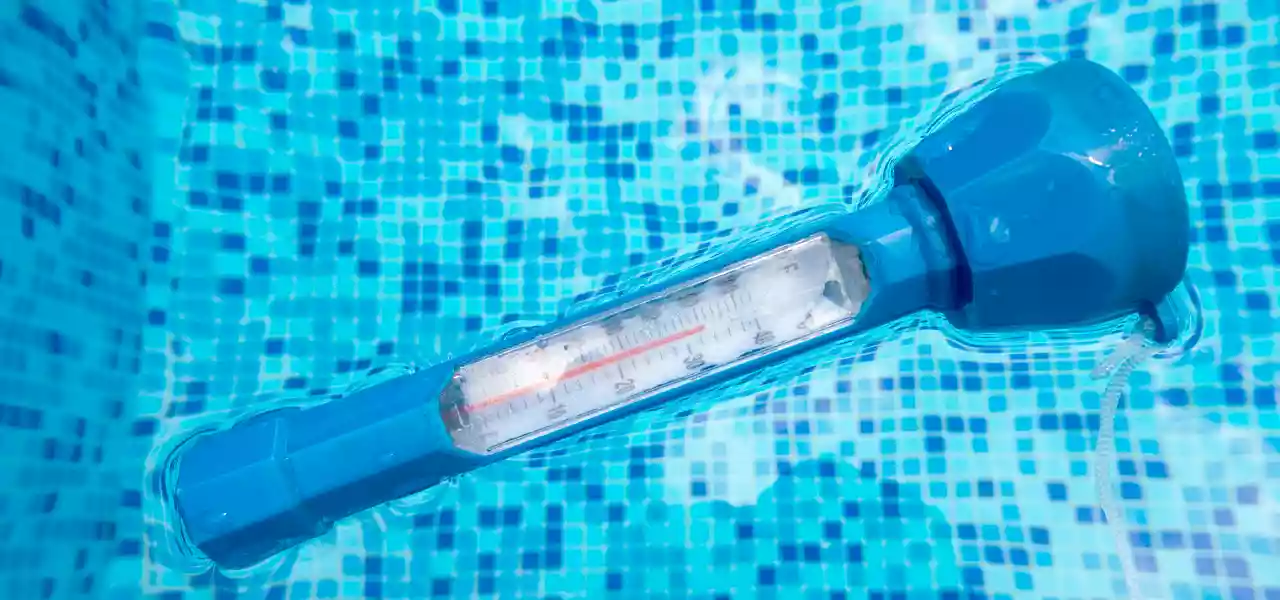
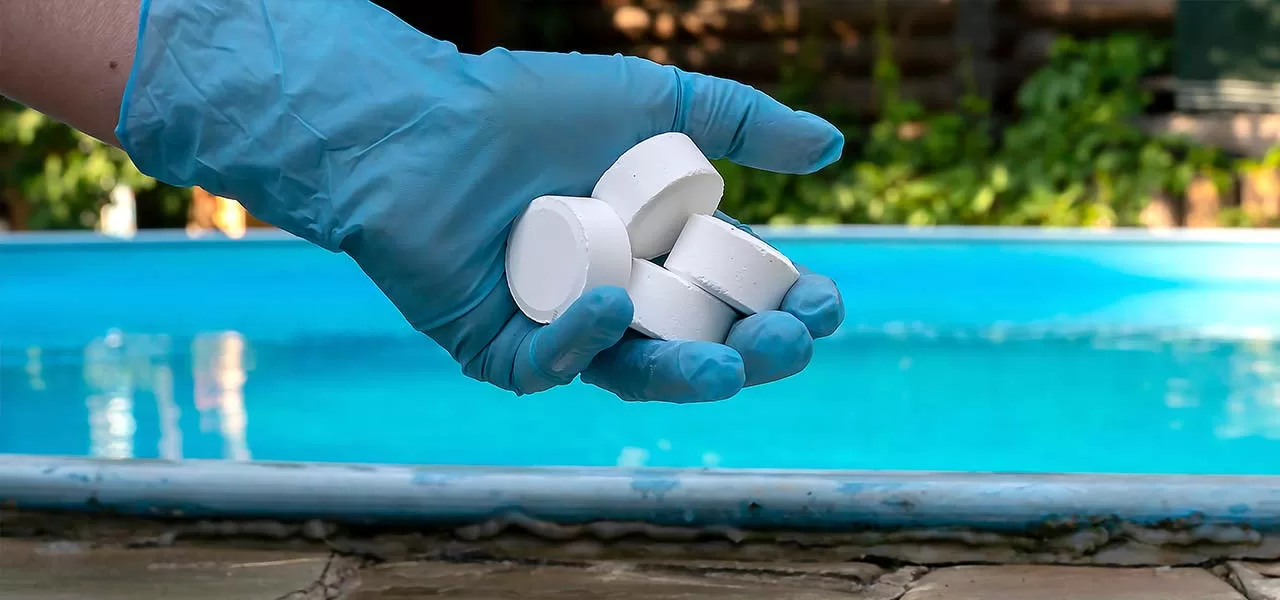
Hi, I just set up a 15″ by 42″ above ground pool. I have no idea how to use the chemicals. I bought the go swim start up kit. However it doesn’t exactly explain anything.
Hi Karen, for the smaller pools, see this post. https://blog.intheswim.com/what-chemicals-are-needed-for-an-intex-pool/ – and for the In The Swim Start Up Kits, here are the instructions.
• Step 1. Begin filling the pool. Add both bottles of stain away following the directions for use on back of the bottles. This will help control minerals that are in the fill water, protecting your pool from staining and scale formation.
• Step 2. As the pool is filling, add clarifier following label directions. Add the Sun Sorb into the skimmer to absorb oils for up to 30 days.
• Step 3. Once the pool is full, start the filter and circulate the water, and allow the system to recirculate the water over night. This will allow complete mixing of the clarifier and stain away with the pool water.
• Step 4. Once the pool has recirculated overnight, shock treat the pool by using the pool shock. Shock treatment will help give the “polished” look you will enjoy. Broadcast shock directly into a concrete pool, but dilute shock in a bucket for vinyl pools. Brush any settled particles immediately.
• Step 5. Add algaecide according to label directions for initial treatment.
Hi bill. I am a first time pool owner. I am planning on having pool water delivered. Can you give me a stepwise approach as to how what and when to add the chemicals to get the pool started?
Frank, after the water is added, test it for alkalinity, pH, calcium hardness levels. If alkalinity is below 70 ppm add alkalinity increaser, and if hardness level is below 150 ppm add calcium chloride. The pH level should be 7.2-7.6. If outside of those ranges, add increaser or decreaser. Add chlorine immediately to the pool, shocking the pool to raise chlorine level fast with 1 lb shock per 10K gals. Also begin chlorinating with tablets. Add cyanuric acid (Stabilizer) at a rate of 3 lbs per 10K gals, to protect chlorine from the sun.
What is the first thing to do in the spring to open my in ground liner pool
Hi Bill, I guess the first thing to do is take off the cover, fill the pool with water if needed, remove the plugs in the wall and skimmer, replace the plugs in the pump and filter, prime the pump and start filtering. Then balance the water and shock the pool
How much salt ash can you put on a standard size pool?
Hi Agnes, I’ll assume that you mean Soda Ash, to raise the pH level in the pool (also called sodium carbonate, or pH Increaser). Adding too much at once can cloud the water and risks adding too much as well, but sometimes you need a lot, if the pH level is very low. I would add 2 lbs per 10,000 gallons at a time (up to 3 lbs per 10K), then allow the water to circulate for a few hours, and the pH to rebalance. Test the water again if necessary, and then add another 2 or 3 lbs per 10,000 gallons of pool water, if needed. That has been my practice when doing an “Acid Start” on new plaster, or a no-drain acid wash procedure on a pool, when 20 lbs or more of soda ash has been called for.
what does soda ash do and when must I use it?
Hi Marcia, soda ash is used to raise pH levels. Use when your pH level is below 7.2
Our community pool has “sand” on the sides of the pool and the bottom.
The community will not tell me what this is.
What is it?
Hi Mary, if the sand is loose and rolling around on the floor, it may in fact be sand. If these are crystallized deposits or nodules on the walls and floor, it is likely calcium scale, precipitated out of solution by a combination of high pH and high calcium hardness levels, and perhaps other factors. Removal is accomplished with a no-drain acid wash, or use of strong sequestering agents to re-dissolve the calcium, or by mechanical methods such as grinding or sanding the surfaces.
what should the pH level be when closing the pool for the winter. have a 18′ round 54″ above ground pool.
Hi Tom, somewhere between 7.2 and 7.6 is what I would shoot for, for winter pH levels.
I will thank you for the info you give Marilyn ,I just bought a. 6′ X 10′ ,22″ just to cool off, didn’t know what to do.
HI Barbara, for small pools like yours, use a chlorine floater and 3″ chlorine tablets, replaced weekly. Test your pH weekly and if found outside of 7.2-7.6, add pool pH chemicals, to raise or lower the level.
just purchased and filled a 10 x 6 Bestway inflatable pool. never have added chemicals to any pool before. please advise on what to do and how much, I really do need the advise. thanks so much!
Hi Marilyn, first you need some test strips or a test kit, to check pH and chlorine levels. And you need a chlorine floater to dissolve chlorine tablets in the pool. You will also want to occasionally shock the pool, to raise the chlorine level 10x normal level, to kill any bacteria and help keep the water clear. You can use a cup or two of bleach, or a pound of granular shock, pre-dissolved into a bucket of water. Run the filter at least 12 hours per day, longer if it starts looking cloudy, even with good pH (7.2-7.6) and a good chlorine level (1-3 ppm). Add 1-2 chlorine tablets to the chlorine floater, replace each week or when they dissolve. If the pH gets too high, lower it with a pH reducer chemical, so your chlorine works most effectively. If you get algae, start using an algaecide. Clean the filter cartridge every week, replace the cartridge every season, or more often if needed.